Seminars
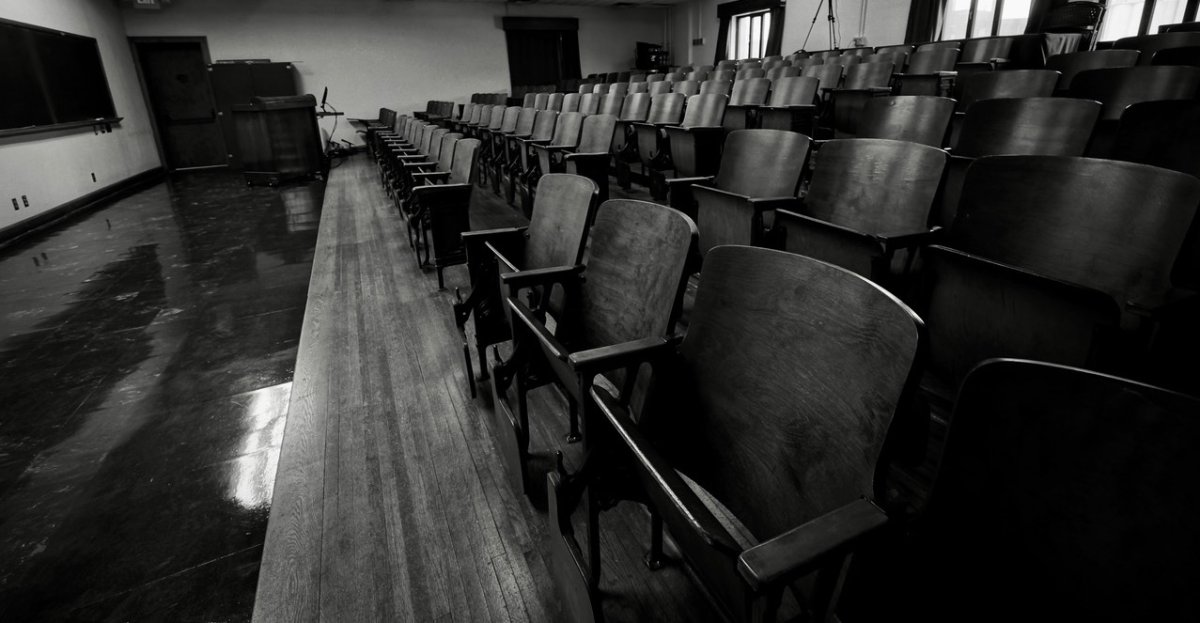
Every other week during the academic year, SAFL hosts prominent figures in environmental science and fluid mechanics. They come from all over the US and the world to share their insight and inspire us to tackle important questions in the field. These seminars are free and open to the public. Join us to learn about the latest research advancements and network with contacts in the field.
SAFL seminars are held on Tuesdays from 3:00 to 4:15 p.m. unless otherwise noted. Join us in the SAFL Auditorium or via Zoom.
Spring 2024 Seminar Series
Recordings
We will record seminars and post them here when given permission by the speaker. To see if a recording is available, scroll down this page to "Past Seminars."
Seminar Notifications
To sign-up for our SAFL Seminar email list, click here.
Related Seminar Series
Department of Civil, Environmental, and Geo- Engineering
Department of Earth Sciences
Department of Mechanical Engineering
Department of Aerospace Engineering and Mechanics
Center for Transportation Studies
Institute on the Environment
Water Resources Sciences
Minnesota Stormwater Seminar Series
Upcoming Seminars
There are no upcoming events matching your criteria.
Past Seminars
Lorenz G. Straub Award Ceremony with Distinguished Lecture by Provost Fotis Sotiropoulos
Tuesday, April 19, 2022, 3 p.m.
This is a hybrid event.
Attend in-person: St. Anthony Falls Laboratory, 2 Third Ave SE, Minneapolis, MN 55414
OR
Join us on Tuesday, April 19th at 3pm for a celebration of the 2020 Lorenz G. Straub Award recipient Dr. Samantha Hartzell, with a distinguished lecture by Provost Fotis Sotiropoulos.
Fotis Sotiropoulos, Provost and Senior Vice President for Academic Affairs at Virginia Commonwealth University
Title: Optimizing Wind Energy Systems via Numerical Simulation: From Novel Wake Physics and Data-Driven Models to Control Co-Design of Large Wind Farms

Abstract: Wind energy is rapidly becoming a disruptive renewable energy technology with the potential to dominate the world’s electric energy production portfolio. Realizing this goal, however, necessitates broadening the focus of research from the individual turbine to integrated, interconnected multi-turbine wind farms. Recent high-fidelity large-eddy simulations (LES) coupled with laboratory and field scale experiments have revolutionized our understanding of the rich dynamics of wind turbine wakes, elucidated the impact of near-wake phenomena to far wake meandering, and yielded striking insights into the effects of turbine-induced coherent structures to wind-farm scale dynamics. In this talk I will discuss the challenges and opportunities for high-fidelity modeling as a powerful tool for enabling wind-farm optimization. I will review recent advances in developing a high-fidelity, fluid-structure interaction computational framework for carrying out large-eddy simulation of atmospheric turbulence past land-based and offshore wind-farms in arbitrarily complex terrains incorporating wind turbine blade aerolasticity and turbine controllers. I will present recent results that: 1) illustrate the ability of high-fidelity simulations to serve as a powerful tool of scientific discovery by augmenting knowledge derived from laboratory and field scale experiments to uncover novel complex flow physics; 2) demonstrate the predictive capability of high-fidelity simulations when applied to utility-scale wind farms; and 3) show for the first time that coupling ambient turbulent flow with advanced turbine control strategies (individual blade pitch control) can reduce blade bending loads pointing to the potential of control co-design as a powerful approach for reducing the levelized cost of energy of large wind farms. Finally, I will demonstrate the efficacy of developing highly efficient LES-data-trained reduced order models using machine learning and convolutional neural networks, which paves the way for a powerful computational framework for control co-design and optimization of large wind farms.
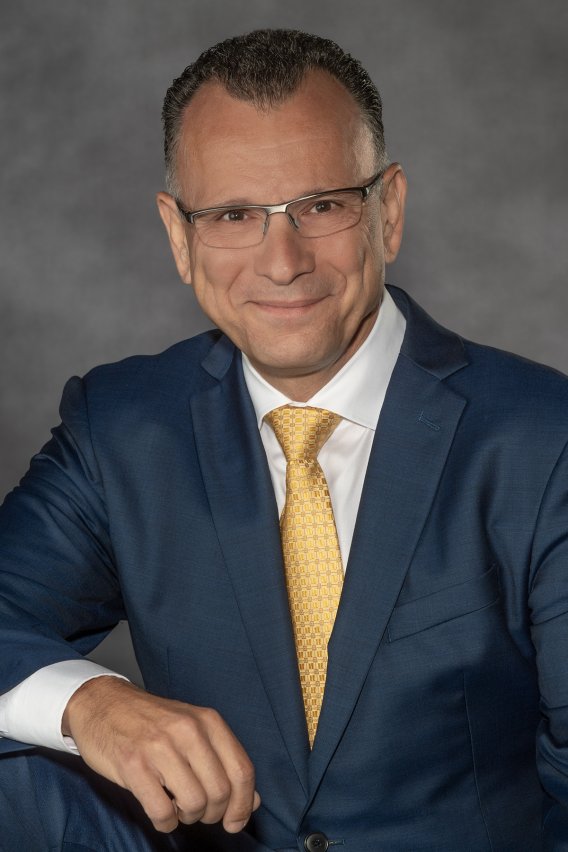
About the speaker: Fotis Sotiropoulos serves as the Provost and Senior Vice President for Academic Affairs at Virginia Commonwealth University. Prior to that he was Dean of the College of Engineering and Applied Sciences and State University of New York (SUNY) Distinguished Professor of Civil Engineering at Stony Brook University (2015-2021). Before joining Stony Brook University, he was the James L. Record Professor of Civil Engineering; Director of the St. Anthony Falls Laboratory; and Director of the EOLOS wind energy research consortium at the University of Minnesota, Twin Cities (2006-2015). Prior to that, he was on the faculty of the School of Civil and Environmental Engineering at the Georgia Institute of Technology, with a joint appointment in the G. W. Woodruff School of Mechanical Engineering (1995-2005). His research focuses on simulation-based engineering science for tackling complex, societally relevant fluid mechanics problems in renewable energy, environmental and human health applications. He has authored over 200 peer reviewed journal papers and book chapters and his research results have been featured on the cover of several prestigious journals. He is the 2019 recipient of the American Geophysical Union (AGU) Borland Lecture award, the 2017 recipient of the Hunter Rouse Hydraulic Engineering Award from the American Society of Civil Engineers (ASCE), Fellow of the American Physical Society (APS) and the American Society of Mechanical Engineers (ASME), and a recipient of a Career Award from the National Science Foundation. He has twice won the APS Division of Fluid Dynamics Gallery of Fluid Motion (2009, 2011), is a 2014 distinguished lecturer of the Mortimer and Raymond Sackler Institute of Advanced Studies at Tel Aviv University and has served on the editorial boards of several journals.
2020 Lorenz G. Straub Recipient Samantha Hartzell, Assistant Professor in the Department of Civil and Environmental Engineering at Portland State University
Doctoral thesis: The role of CAM photosynthesis in the soil-plant-atmosphere continuum
Abstract: In arid and semiarid climates, water availability often limits the potential for food security, energy production, and carbon storage. One avenue for water conservation is through Crassulacean acid metabolism (CAM) photosynthesis, a pathway which naturally occurs in up to 50% of the total plant biomass in dryland ecosystems. Vegetation with this pathway utilizes an inverted circadian rhythm to achieve a water use efficiency six to ten times higher than that of typical C3 plants. Here I will introduce advances in the modeling of CAM photosynthesis and water use, including an analysis of its nonlinear dynamics in response to environmental forcing and the emergence of chaotic behavior (as observed in nature). This treatment of the CAM circadian rhythm enables the development of a unified model of all three photosynthetic pathways (C3, C4, and CAM) coupled hydraulically to soil and atmospheric conditions. Results predict CAM water use at the plot scale for the first time and allow carbon and water exchanges to be compared consistently among the three photosynthetic pathways.
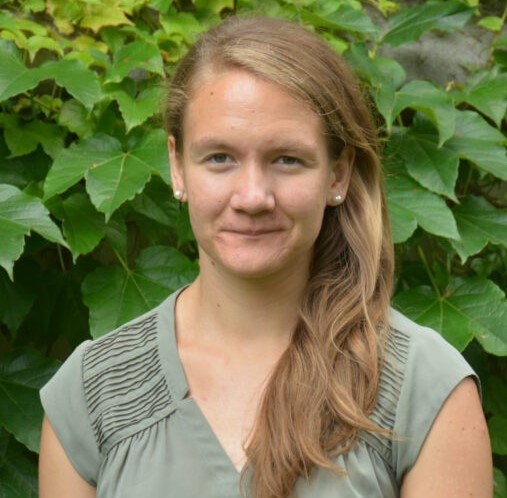
About the speaker: Samantha Hartzell is an assistant professor at Portland State University. Her research interests focus on both urban and dryland ecohydrology, and she has recently received funding from the National Science Foundation to study impacts of vegetation type on green roof runoff reduction. She was a National Science Foundation Graduate Research Fellow at Duke University, where she received her M.S. in 2017, and Princeton University, where she received her Ph.D. in 2020. Her doctoral thesis, supervised by Prof. Amilare Porporato, is entitled “The role of CAM photosynthesis in the soil-plant-atmosphere continuum.” Dr. Hartzell’s work on the unified modeling of C3, C4, and CAM photosynthesis received the Robert H. Socolow Carbon Mitigation Initiative best paper award for Princeton University graduate students in 2020. She is a member of the National Association of Geoscience teachers, the American Geophysical Union, and the Chi Epsilon Civil Engineering Honor Society.
History of the Fellowship: The Lorenz G. Straub Award is awarded annually for the most meritorious thesis in hydraulic engineering, ecohydraulics, or a related field. Applicants are internationally entered and nominations may be made by any recognized civil and environmental engineering program in the world. The establishment of the Lorenz G. Straub Award was announced at the dedication of the Lorenz G. Straub Memorial Library within St. Anthony Falls Laboratory by Edward Silberman. When the Straub Award was established, it was recognized that it was unique in its nature. In the years of its existence, it has come to be widely recognized professionally and has accrued much honor to its recipients.
Experimental investigations of the fluid mechanics involved in wind turbines at very high Reynolds number - Marcus Hultmark, Princeton
Tuesday, April 12, 2022, 3 p.m.
This is a hybrid event.
Attend in-person: St. Anthony Falls Laboratory, 2 Third Ave SE, Minneapolis, MN 55414
OR
Marcus Hultmark, Associate Professor in the Department of Mechanical & Aerospace Engineering at Princeton University
Abstract: Wind turbines and wind farms present unique challenges—fluid mechanically—as they combine extremely high Reynolds numbers with additional time scales imposed by the rotation, and three-dimensional effects. This implies that resolved numerical solutions are too computationally expensive and investigations in conventional wind tunnels are impossible due to the flow speeds and rotational rates needed in order to satisfy the dynamic similarity requirements. At Princeton, we achieve the conditions a large wind turbine experiences, experimentally, by compressing the air around a model-scale turbine up to 238 bar. This yields conditions similar to those experienced by a field-sized turbine using a model that is only 20 cm in diameter. High pressure enables tests at high Reynolds numbers but at low velocities, which implies that realistic non-dimensional frequencies can be tested even with such a small model. This unique feature is used both to study rotating wind turbines and their wakes, as well as the unsteady aerodynamics that are involved in these machines.
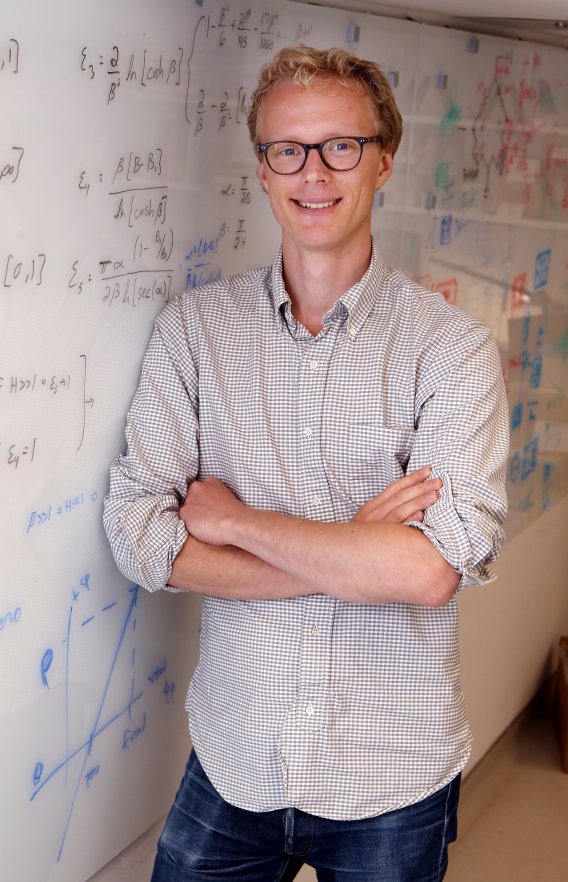
About: Marcus Hultmark is an associate professor in the Department of Mechanical and Aerospace Engineering at Princeton University, and he is the director of the Princeton Gas Dynamics Lab. His research interests include a variety of problems related to fluid mechanics, with focus on problems involving turbulence, such as heat and mass transfer as well as drag reduction and wind energy. Theoretical work is combined with experimental studies, and an important part of his research program is the development and evaluation of new sensing techniques to investigate these phenomena with high accuracy, including velocity, temperature and humidity sensors. He was awarded the 2016 Air Force Young Investigator award, the 2017 NSF Career award and the 2017 Nobuhide Kasagi Award. He is co-founder of two MEMS based startup companies, both formed around innovations from his research lab.
Rivers, humans, and the dark soils of the ancient Amazon - Dr. Taylor Perron, MIT
Taylor Perron, Professor of Earth, Atmospheric & Planetary Sciences at Massachusetts Institute of Technology
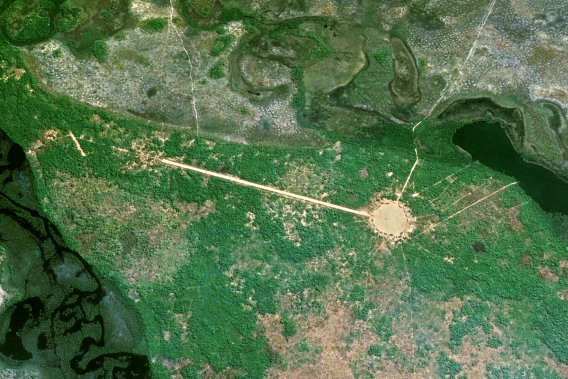
Abstract: Archaeological evidence suggests that humans built thriving agricultural societies in the ancient Amazon, in part by creating unusually rich soils that remain fertile even today. However, it is unknown how extensive these soils are or whether they were created intentionally. I will show how South American river systems created a template for this successful agricultural strategy, make the case that ancient people managed soil using practices that are still employed today by Amazonian indigenous groups, and demonstrate the potential for carbon storage in anthropogenic soils. Along the way, I will consider the climate sensitivity of rivers and some lessons from ancient peoples about sustainable tropical agriculture.
About the speaker: Taylor Perron is Professor of Earth, Atmospheric & Planetary Sciences at MIT. He is best known for his work on how rivers shape topography on Earth and other planets. Prof. Perron is a Fellow of the American Geophysical Union, a recipient of the James B. Macelwane Medal, and a MacArthur fellow. He holds an AB in Earth and Planetary Sciences and Archaeology from Harvard University and a PhD in Earth and Planetary Science from the University of California, Berkeley.
SAFL Virtual Awards Seminar - Spring 2022
SAFL is excited to host a virtual awards ceremony on Tuesday, March 29th, 2022 at 3p.m. that will celebrate students in the St. Anthony Falls Laboratory (SAFL) community. We are tremendously grateful to have such talented, dedicated students at SAFL, and it is a privilege to celebrate them with awards that honor not only them and their accomplishments, but the legacies of the people who have helped SAFL become what it is today.
We will be presenting the 2021 - 2022 Alvin G. Andersen Award, the Heinz G. Stefan Fellowship, and the Nels Nelson Memorial Fellowship. Family members and former students will be present to speak about the award namesakes, the recipients will be introduced by their respective advisors, and the recipients will give remarks on their research. We expect the event to last approximately an hour.
2021 - 2022 Award Recipients:
Alvin G. Anderson Award - Jabari Jones, PhD student from the Department of Earth and Environmental Sciences (advisor Andrew Wickert)
Heinz G. Stefan Fellowship - Sida He, former PhD student from the Department of Mechanical Engineering (advisor Lian Shen)
Nels Nelson Memorial Fellowship - Woonghee Lee, PhD student from the Department of Mechanical Engineering (advisor Peter Kang)
You can learn more about this year’s recipients in the award ceremony program.
Charles C.S. Song Fellowship Award Ceremony and Distinguished Lecture
Tuesday, March 22, 2022, 3 p.m.
This is a hybrid event.
Attend in-person: St. Anthony Falls Laboratory, 2 Third Ave SE, Minneapolis, MN 55414
OR
Presentation of the Inaugural Charles C.S. Song Fellowship
Award Recipient: Jiaqi Li, Department of Mechanical Engineering, for his research "Novel techniques for flow measurement applications."

Abstract: Turbulent flow is a common occurrence in the environment and has been studied in both the lab and the field. It’s depicted as a chain of cascading eddies and they interact with each other and the objects within the turbulence. We developed three techniques to investigate multiple aspects of turbulence and its interaction with the dispersed objects. First, a machine-learning-based image segmentation method is developed to measure the bubble distribution, size and shape from shadowgraph of bubbly flow due to cavitation. This method yields faster processing speed and higher accuracy compared to the traditional methods and can be applied to other types of shadowgraph. Second, experiments are conducted in the field using a super-large-scale particle image velocimetry system and a particle tracking velocimetry system to measure the settling of snow particles in atmospheric turbulence. Evidence supports the preferential sweeping of snow particles with higher concentration and enhanced velocity at the downward side of vortices. Lastly, a direct vorticity measurement technique based on digital inline holography is developed and assessed. It can be used to capture small-scale eddies in turbulence and study the interaction of the eddies in most laboratory experiments.
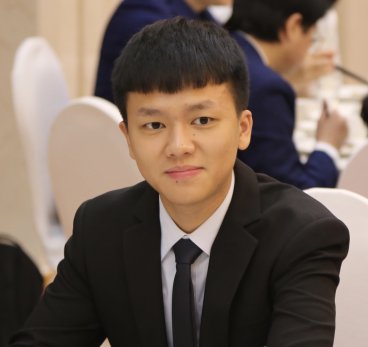
About the Recipient: Jiaqi Li is a third year PhD student in the Department of Mechanical Engineering at the University of Minnesota. He is currently working with Prof. Jiarong Hong on experimental fluid mechanics. His work focuses on developing experiment techniques for measurement of turbulent flow under a broad range of scales including a method for direct vorticity measurement, a snow particle analyzer based on digital inline holography, and a machine-learning-based imaging processing approach for shadowgraph of bubbly flow. Jiaqi received his bachelor’s degree from the University of Science and Technology of China in Energy and Power Engineering.
Dr. Sue Gong Remembers Dr. Charles Song

About the Speaker: Dr. Cuiling (Sue) Gong received her BS degree from Tsinghua University in China. She studied at SAFL from 1991 to 1994 and received her master’s degree in Civil and Environmental Engineering from University of Minnesota. She later received her Ph.D. in Mechanical Engineering at MIT. She joined the technology development team at Texas Instruments in 2000 working on the design of the digital micromirrors device (DMD) that has enabled a wide range of display and light control applications such as projectors in movie theaters, classroom, and conference rooms, head-up display in cars, digital lithography and hyperspectral imaging. She currently teaches at Texas Christian University as a professor in Fort Worth, Texas.
Distinguished Lecture: Self-focusing of the flow: On the growth of karst conduits and river networks
Distinguished Speaker: Piotr Szymczak, Department of Complex Systems Modeling, Faculty of Physics at the University of Warsaw
Abstract: "The waves of the sea, the little ripples on the shore, the sweeping curve of the sandy bay between the headlands, the outline of the hills, the shape of the clouds, all these are so many riddles of form, so many problems of morphology, and all of them the physicist can more or less easily read and adequately solve," wrote D'Arcy Wentworth Thompson in 1917 in his famous book "On growth and form." Modern science has progressed along the way outlined by Thompson, discovering the principles by which multiplicity of relatively simple interactions can give rise to the emergence of organized structures or qualitatively new behaviors. In this talk, I will give two examples of self-organizing growth processes driven by the flow: the growth of "wormholes" in a dissolving rock during early stages of cave formation and the growth of seepage channels incised by groundwater flow. In particular, I will discuss the question why the initially planar fracture is dissolving in an inhomogeneous manner, leading to the appearance of karst conduits and why the tributaries of Apalachicola River in Florida join each other at an angle of 72 degrees.
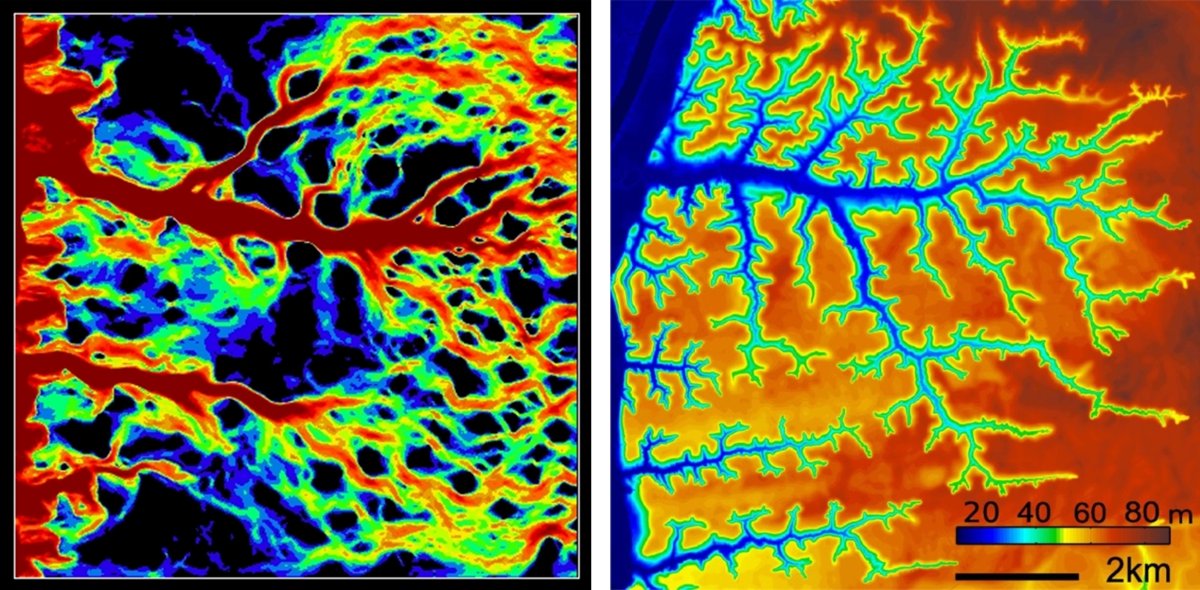
About the speaker: Piotr Szymczak received his PhD degree in physics from the University of Warsaw (Poland) in 2001. He was a postdoctoral fellow at the University of Florida (USA) before joining University of Warsaw as a faculty. He now heads the Department of Complex Systems Modeling at the Faculty of Physics, University of Warsaw. He was a visiting professor at several research institutions, including the Newton Institute in Cambridge, UK, Institut de Physique du Globe de Paris (France) and Sorbonne University in Paris. His research focuses on the intersection between fluid dynamics and other fields: from the reactive flow and dissolution processes in porous or fractured rock to the structure and dynamics of biological soft matter. He has published over 100 papers in peer-reviewed journals and edited two books.
View the Charles C.S. Song Fellowship Award Ceremony & Distinguished Lecture program.
Beyond the Lab: Talking Fire with Vern Northrup, Damon Panek and Kurt Kipfmueller
Tuesday, March 15, 2022, 3 p.m.
This is a hybrid event.
Attend in-person: St. Anthony Falls Laboratory, 2 Third Ave SE, Minneapolis, MN 55414
OR
Fire panelists
Vern Northrup, retired Fire Operations Specialist for the Bureau of Indian Affairs and Fond du Lac Band elder
Damon Panek, Wildfire Operations Specialist for the Fond du Lac Band
Kurt Kipfmueller, Associate Professor of Geography, Environment and Society at the University of Minnesota
Event overview
Wildfires are in the news now more than ever. Yet, attempting to eliminate fire from the landscape - the dominant U.S. Forest Service policy for decades - is not the answer. In fact, policies of full fire suppression, instituted in the early 1900s, have only contributed to the unhealthy forest conditions which produce many of today's destructive wildfires.
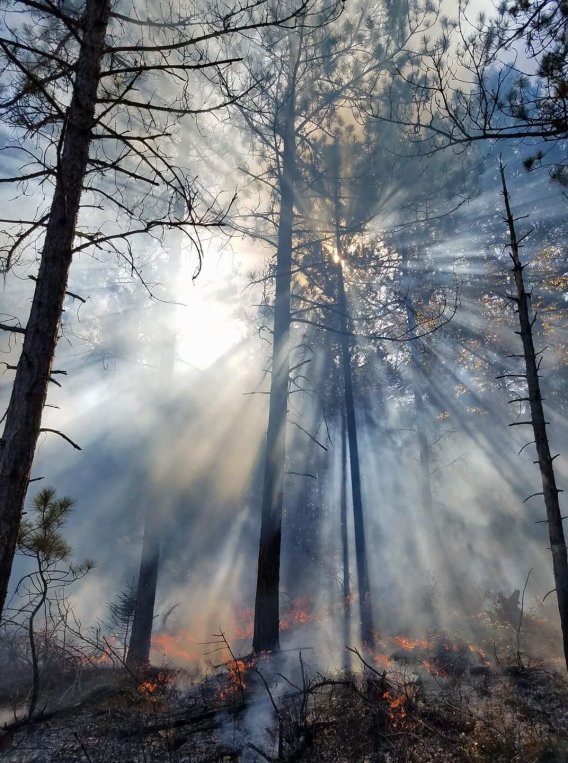
During a panel discussion, fire experts Vern Northrup and Damon Panek and dendrochronologist Dr. Kurt Kipfmueller will talk about good fire. Long before colonization, Indigenous peoples across North America have viewed the act of burning as a tool to manage the landscape and as a culturally significant practice that forms part of a reciprocal relationship with the environment. Vern and Damon will discuss cultural fire and Indigenous fire stewardship, the factors that prevent cultural and prescribed burning today, and more. Kurt will provide insights gained from his work documenting fire histories in the Boundary Waters and across the Great Lakes region.
In addition to the panel discussion, this event will feature a showing of the 15-minute documentary Oshkigin Spirit of Fire. The event will end with an audience Q & A, so please bring your questions for our fire experts!
About the speakers
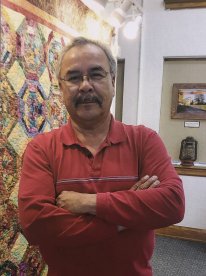
Vern Northrup spent 24 years as a Fire Operations Specialist for the Bureau of Indian Affairs, working on wildfires both across the West and close to home in Minnesota. Vern is a Fond du Lac Band elder and a visual storyteller, with his photography and words featured in his book Akinomaage: Teaching from the Earth and in a traveling exhibit which has been shown across the state.
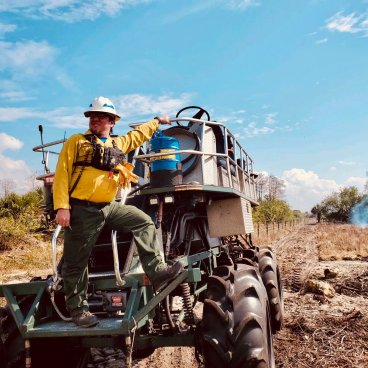
Damon Panek is the Wildfire Operations Specialist for the Fond du Lac Band and has been involved in fire since 2001. Before stepping into his current role, Damon worked as the Ojibwe Cultural Specialist for the Apostle Islands National Lakeshore, where he headed a program seeking to restore cultural fire practices to Stockton Island. This landmark program successfully encouraged the National Park Service, the federal land management agency which oversees the Apostle Islands, to embrace traditional cultural knowledge. This program underscored that cultural burning isn’t just about ecology - but rather about the identity of the Ojibwe as a people connected to the landscape, with fire as a major component of this reciprocal relationship.
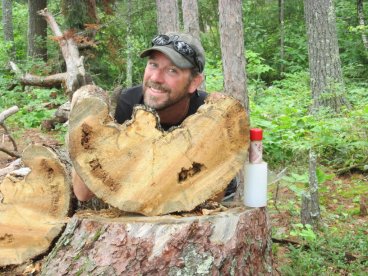
Kurt Kipfmueller is an Associate Professor of Geography, Environment and Society at the University of Minnesota. Kurt uses tree rings to reconstruct and better understand past environments, and has conducted extensive work mapping the historical presence of wildfires across the Great Lakes region.
Please note: This event is the second in a two-part series about fire. Watch Dr. Sally Thompson (University of Western Australia) discuss managed wildfire impacts on vegetation and water in the Sierra Nevada.
Beyond the Lab
This two-part fire series is the first in SAFL's Beyond the Lab series. We love learning from prominent figures in environmental science and fluid mechanics, just as we recognize the value in examining any issue, idea, or area of study from a multitude of perspectives. The Beyond the Lab series is being developed to do just this: enriching our understanding of environmental science and fluid mechanics while situating these concepts - in this case, about fire - in a holistic context. First, we heard from Dr. Sally Thompson, an expert in ecohydrology, about fire-water-biodiversity connections at a study site in California; now, we turn to Vern Northrup, Damon Panek and Kurt Kipfmueller to further our understanding of fire as a culturally and ecologically significant practice on the landscape.
Do you have an idea for a Beyond the Lab series? Email Clare at boeri007@umn.edu.
Climate-Informed Adaptive Water Supply Planning for Uncertain Future - Dr. Sarah Fletcher, Stanford University
Sarah Fletcher, Assistant Professor of Civil and Environmental Engineering and Center Fellow at the Woods Institute for the Environment at Stanford University
Abstract: Water planners face the challenge of ensuring reliable, affordable water supplies in a changing and uncertain climate. Adaptive planning approaches, in which planners delay or change action and respond as the climate changes over time, have the potential to enable resilience without unnecessary, expensive infrastructure development. However, adaptive planning also poses a risk: When will we have learned enough to adapt? And what changes should we make? These questions are highly dependent on the local climate. Regions facing slow, long-term change in average precipitation require different responses than those facing increased frequency of short, intense droughts. In this talk, I present progress towards a computational framework for climate-informed adaptive planning using three case studies. In Mombasa, Kenya, near-term observations about climate change allow planners to improve predictions of long-term precipitation and delay storage investments. In Santa Barbara, CA, decentralized water technology can mitigate the impact of uncertainty in drought severity and duration. In Santa Cruz, CA, intense droughts pose a threat to household water affordability.

About the speaker: Sarah Fletcher is an Assistant Professor of Civil and Environmental Engineering and Center Fellow at the Woods Institute for the Environment at Stanford University. Her research focuses on water resources planning and climate change adaptation. She addresses these questions using computational systems models, integrating methods from hydrology, climate science, policy analysis, and data science to inform decision-making around critical environmental challenges. Sarah holds a PhD in Engineering Systems from MIT, an S.M. in Technology and Policy from MIT, and a B.A. in Physics and Economics from the University of Pennsylvania. In her free time, she enjoys climbing, hiking, playing the violin, and reading novels. You can learn more about her work at www.fletcherlab.science.
Managed wildfire impacts on vegetation and water in the Sierra Nevada - Dr. Sally Thompson, University of Western Australia
Sally Thompson, Associate Professor in the School of Engineering, Civil, Environmental and Mining Engineering at the University of Western Australia
Abstract: In the remote Illilouette Creek Basin in Yosemite National Park, managers 50 years ago made a radical choice - to let wildfires burn without intervention whenever possible. After 50 years of a near-natural fire regime, the structure of the forest, biodiversity, the hydrological cycle and the fire hazards in this basin are all quite distinct from fire suppressed conditions and from the remainder of the Sierra Nevada. What can this bold experiment teach us about living with fire in mid-elevation watersheds? I'll share our findings from a long-term research project that has dived deep into field observations, remote sensing, modeling and experimentation to learn about water-fire-biodiversity connections in this unique basin.
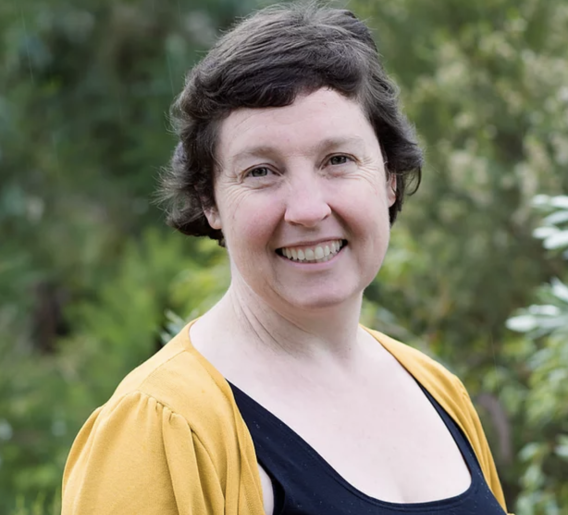
About the speaker: Sally received undergraduate degrees in Environmental Chemistry and Environmental Engineering from the University of Western Australia. She worked as an engineering consultant for several years, before starting her PhD with the support of a General Sir John Monash Award at Duke University in 2006. Upon graduating in 2010, Sally worked as a postdoctoral scholar at Princeton and Purdue Universities. She was appointed Assistant Professor of Surface Hydrology at the University of California, Berkeley, in 2012, and promoted to Associate Professor with tenure in 2017, at which time she was also appointed the inaugural Claire and Hsieh-Wen Shen Distinguished Research Chair. Sally began work at the University of Western Australia in 2019, where she co-leads the Center for Water and Spatial Science and the foundational Australian Critical Zone Observatory Network (OzCZO). Sally is also the recipient of the US National Science Foundation CAREER award, the American Geophysical Union Early Career Award in Hydrology, and the European Geophysical Union Jim Dooge Award for "best paper" in Hydrology and Earth System Science.
Debris flows over erodible boundaries in narrow channels - Dr. Chi-Yao Hung, National Chung Hsing University - Taiwan
Tuesday, Jan. 25, 2022, 3 p.m.
This is a hybrid event.
Attend in-person: St. Anthony Falls Laboratory, 2 Third Ave SE, Minneapolis, MN 55414
OR
Chi-Yao Hung, Assistant Professor in the Department of Soil and Water Conservation at National Chung Hsing University in Taiwan
Abstract: Granular avalanches flowing over loose beds evolve by gaining or losing grains through their basal boundary as stress and velocity change within the sheared layer. In addition, the erosion of the side boundary also significantly affects the entraining progress. Here we first proposed a general depth-averaged theory for dry erosive flows in a non-uniform channel using balance equations for mass, momentum, and (crucially) kinetic energy. We assume a linearized $\mu(I)$ rheology for granular deformation and Coulomb friction along the sidewalls. The theory predicts the kinematic behavior of channelized flows under various conditions, which we first test in two sets of experiments: (1) a linear chute, where abrupt changes in tilt drive unsteady uniform flows; (2) a rotating drum,to explore steady non-uniform flow. Next, to investigate the possibility of wall erosion, we scale up the granular stress by performing the experiments under enhanced gravity conditions in a geotechnical centrifuge. Also, by incorporating Coriolis force the model can treat behavior under centrifuge-induced enhanced gravity. We develop an erosion model based on the kinetic energy exchanges through theory and experiment observation. The proposed erosion model can be applied to local erosion patterns and global erosion rates.
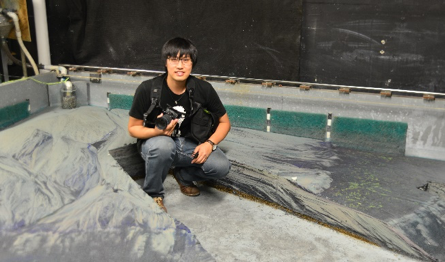
About the speaker: Dr. Chi-Yao Hung is an Assistant Professor in the Department of Soil and Water Conservation at National Chung Hsing University in Taiwan. He received a bachelor degree from the Department of Soil and Water Conservation in National Chung Hsing University, Taiwan, and received his master and doctoral degrees from the Department of Civil Engineering, National Taiwan University in Taiwan. Dr. Hung has worked as a visiting scholar at Columbia University and Aix-Marseille University before joining National Chung Hsing University. Dr. Hung's research interest is morphological hydraulics. This subject includes disasters on hill slope, fluvial geomorphology, and landscape evolution. His current focuses are debris flow simulation, landscape evolution, two-phase solid-liquid flows and morphological field investigations. A major research goal is using fundamental fluid mechanics and applied mathematics to solve these interesting morphological hydraulics problems.
Environmental degradation of polymers: an example of polyacrylamide and an outlook for plastics - Boya Xiong, University of Minnesota
Tuesday, Dec. 7, 2021, 3 p.m.
This is a hybrid event.
Attend in-person: St. Anthony Falls Laboratory, 2 Third Ave SE, Minneapolis, MN 55414
OR
Boya Xiong, Assistant Professor, Department of Civil, Environmental and Geo- Engineering, University of Minnesota

Abstract: Due to our current linear plastic economy, water soluble polymeric chemicals and micro- and nano-plastic fragments have become ubiquitous environmental pollutants at a planetary scale, posing unknown risks to our ecosystem. Often being perceived as “forever-lasting” pollutants, polymers in the aquatic environment have not been systematically studied for degradation mechanisms, hindering the true estimation of environmental lifetime and impacts of polymers. This talk will provide an example of the degradation of drag reducing polyacrylamide in the untapped deep subsurface environment that is used in high volume hydraulic fracturing. Chemically, reactive oxygen species from Fe2+ bearing shale reacting with dissolved oxygen could lead to polymer chain scission of a factor of 100. Simulated ultrahigh mechanical stress using a capillary flow also led to substantial chain rupture, representing a new paradigm for environmental pollutant degradation (i.e., mechanochemistry). These processes can cause 4-5 orders of magnitude chain scission, leaving a cocktail of undefined polymer fragments in wastewater. Looking forward, the Xiong Lab aims to elucidate polyolefin plastic material degradation that leads to release of micro/nanoplastics and novel chemical pollutants. To study and model these processes, ongoing work includes development of new multifaceted tools that incorporates advanced analytical chemistry, nanomechanical and particle characterization, and construction of weathering chambers. We envision that the outcome could inform environmental impact and health risks associated with plastic waste and future sustainable design of polymers.
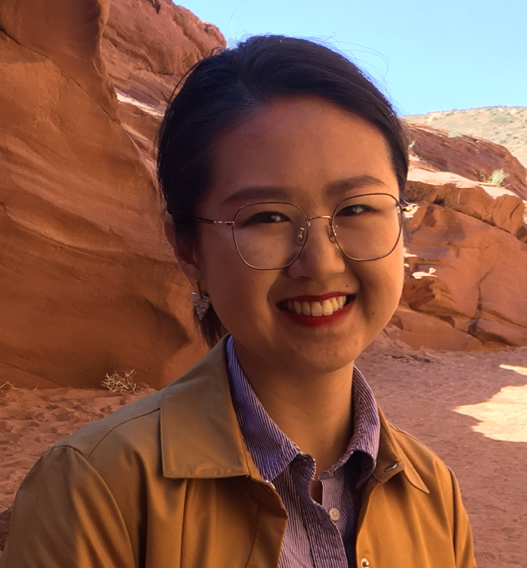
About the speaker: Dr. Boya Xiong joined the Department of Civil, Environmental and Geo-Engineering at University of Minnesota as an assistant professor in August 2020. Dr. Xiong’s research focuses at the interface of polymer science, environmental chemistry, and membrane material science, to i) elucidate the fundamental mechanisms of polymer degradation (e.g., micro/nanoplastic generation) that dictates the environmental fate and shapes sustainable design and management of future polymer chemicals and materials; ii) develop novel nature-inspired membrane material architecture to enable efficient separation and mitigate pathogenic contamination and fouling in engineered systems. Xiong brings broad experience in polymer degradation science, organic fingerprinting analysis, membrane-based brine treatment, bio-based chemical separation, and sustainable drinking water treatment. Xiong earned a Ph.D. in Environmental engineering at Pennsylvania State University where she also obtained her M.S. in Agricultural and Biological Engineering. Xiong earned a B.S. in Biotechnology from East China University of Science and Technology, when she researched marine microbiology at Flinders University of South Australia. Prior to her appointment, Xiong was a postdoctoral associate on multiple sustainable materials and water quality related projects with interdisciplinary efforts at MIT.
